A burst of energetic particles from the Sun called a coronal mass ejection peppered Earth’s magnetic field yesterday afternoon sparking a modest but beautiful all-night display of the aurora borealis. Another light show may be in the offing tonight for skywatchers living in the northern U.S., Canada and northern Europe.
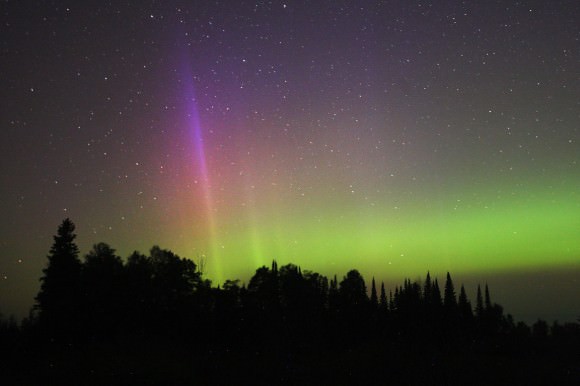
Pale green fingers of light splayed across the northern sky at twilight’s end came as a surprise. NOAA space weather forecasters had predicted little activity. These soon faded but a thick, fuzzy arc persisted throughout the night. It arched from horizon to horizon across the northern sky like a pallid, monochromatic rainbow. Such arcs are common. Often the aurora never gets past this stage and simmers quietly or even fades away during the night.
Not this one. Around local midnight (1 a.m. CDT) here in Duluth, Minn. small bright spots and a series of tall, faint rays punctuated the arc and over the span of a half-hour completely reshaped it into loopy rayed arcs resembling a crown.
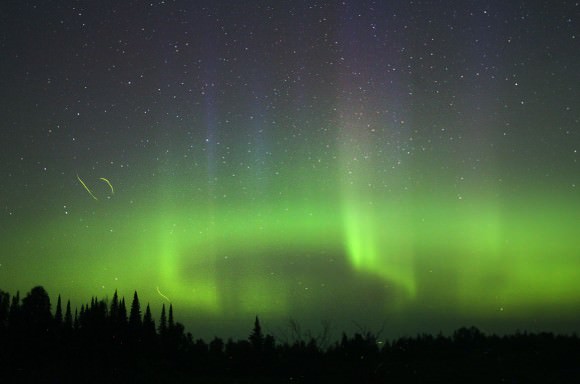
To the eye, the brightest parts of the aurora appeared green, but the taffy-stretched rays were colorless. The camera’s sensitivity coupled with a 30-second time exposure revealed striking pinks and hints of blue. Both pink and green colors are caused by the emission of light from oxygen atoms.
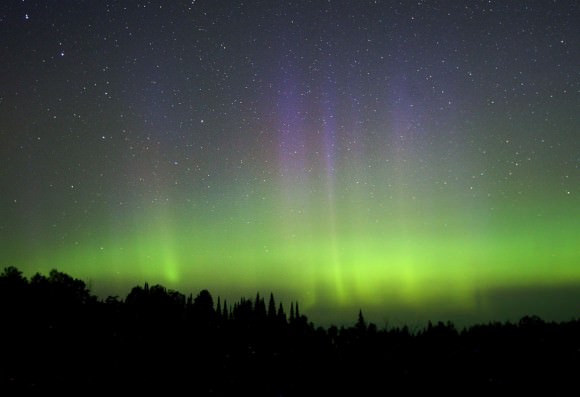
Bombarded by high-speed solar wind electrons and protons, they get jazzed into higher energy states. When the atoms return to rest, each spits out a photon of green or red light. All those tiny flashes add up. Multiplied by the billions of atoms that exist even in the rarefied air at the aurora’s typical 60-150 mile (100-250 km) altitude and you get heavenly eye candy.
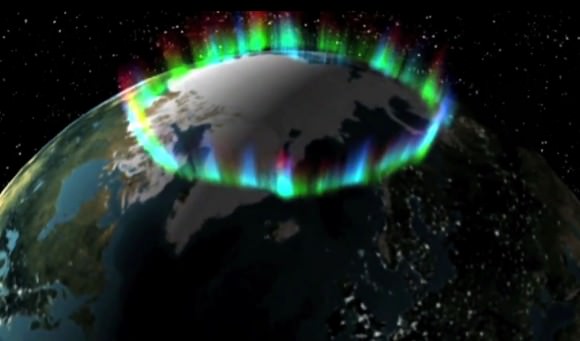
I started watching the northern lights at 11 from home then took a drive to darker skies. Even at dawn’s 3 a.m. start, the green arc held its own shot through with rays that occasionally towered halfway up the northern sky. While this display wasn’t a grand spectacle like some auroras, it possessed a certain majesty the same way a long, slow movement concludes a great symphony.
Chances for more of the same continues through tonight and possibly into tomorrow, so keep a watch on the northern sky before you hit the hay tonight. If you see something green and glowing it you might be in for a treat.
In another installment, I’ll share tips on how best to see the northern lights and share several excellent tools you can use for predicting when they might occur.

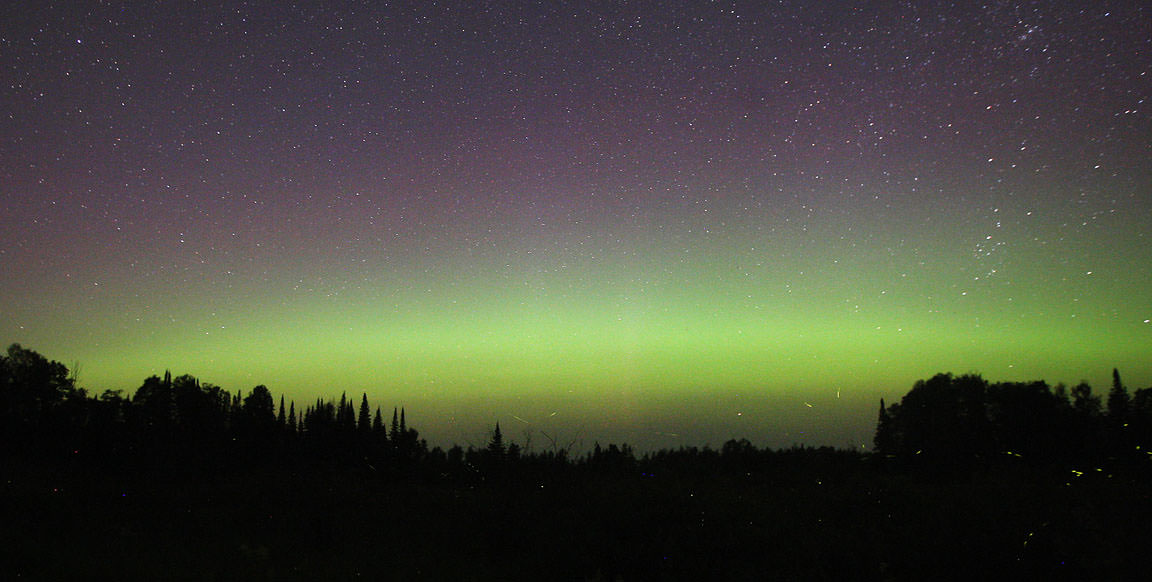
what April explained I’m amazed that a single mom able to get paid $6507 in 4 weeks on the computer. did you see this page www.KEP2.com
Is there any way to get an alert about these events while they’re happening? Always reading about them the next day is so disappointing.